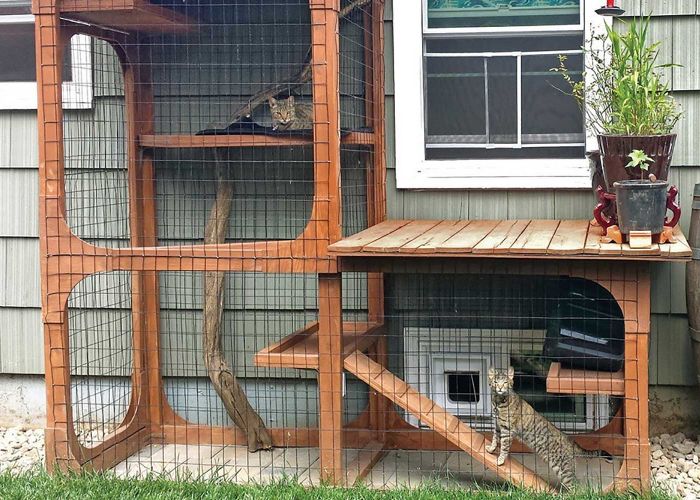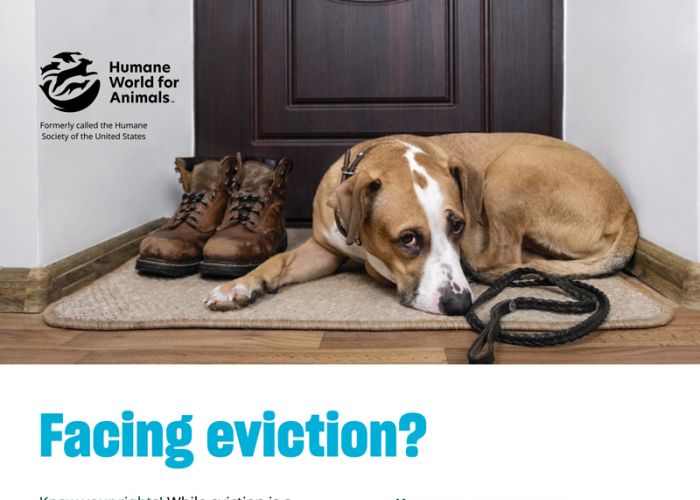Ready and able
Why and how to enlist volunteers with disabilities at your organization
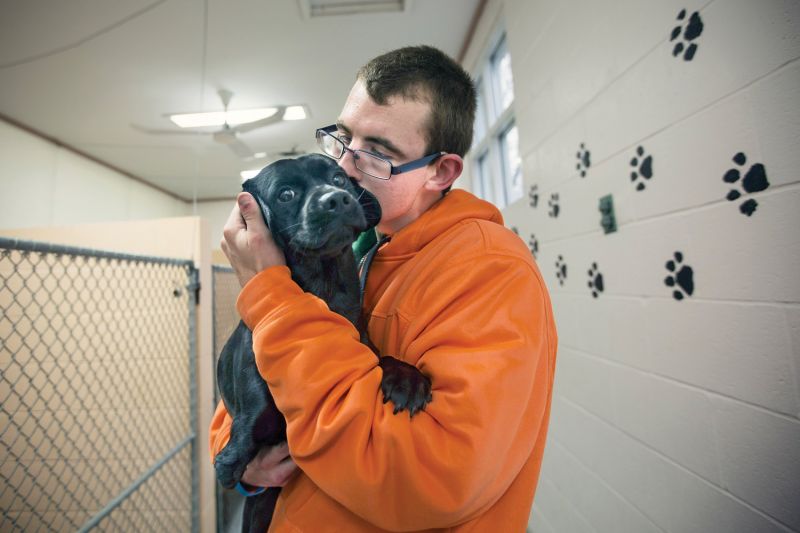
You see the benefits of using volunteers at your shelter, for you as well as them: They perform vital tasks and lessen the burden on your staff, all while helping animals, gaining work experience and developing connections to the community.
But are you overlooking a potential pool of volunteers—namely, people with physical or developmental disabilities—because you struggle to decide how they might fit into your programs?
“The tension [comes from] feeling like you have to say yes to everyone, whether they’re going to be of service to the organization and the animals or not,” says Hilary Hager, senior director of volunteer engagement for Humane World for Animals. “While not every shelter is, right at this very moment, ready to take special-needs folks on, I think we should all work toward creating space for those folks to figure out how they can really be engaged successfully in a way that has everyone feeling great.”
While engaging volunteers with disabilities isn’t right for every animal care agency, too often organizations shut the door on them, says Allison Waldvogel, a certified volunteer administrator and volunteer services manager for the Humane Society of the Pikes Peak Region in Colorado, which engages volunteers with cognitive or physical disabilities.
“At the end of the day, these are still people,” she says, “and there’s no such thing as normal or typical anymore, in general.”
20% of Americans live with at least one disability.
Cardinal rules
Shelters that have successfully incorporated volunteers with disabilities say there are a couple of cardinal rules: The safety of staff, animals and volunteers is paramount and can’t be overlooked. Organizations should decide if and when they are ready to accommodate volunteers with disabilities, and then determine how to do it well.
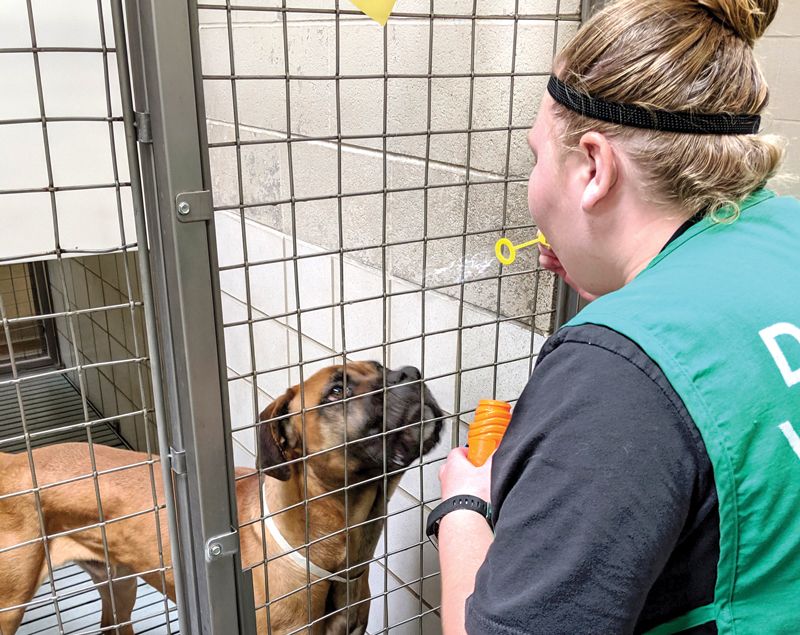
One obstacle is that some shelter managers may not know how to appropriately train, guide and support volunteers with disabilities. Managers may be so concerned about liability or unfamiliar with how the Americans with Disabilities Act (the federal law that prohibits discrimination against people with disabilities) applies to volunteers and their organization’s rights that they “just kind of dance around the issue and don’t actually address it,” Waldvogel says. But “it’s not as scary as it seems.”
In general, volunteers are not covered under Title I of the ADA, which entitles individuals who meet the definition of “employee” to reasonable accommodations. A volunteer may meet this exception if they receive “significant remuneration,” such as pay and benefits, and in some cases, if volunteer service typically leads to employment with the organization, according to the Job Accommodation Network, a service of the U.S. Department of Labor’s Office of Disability Employment Policy.
“Figure out a way for it to really work for all parties, to be a good fit, to make sure everyone is safe, and that the work that needs to be done gets accomplished,” says Hager. “Organizations that successfully engage alter-abled folks have approached it very thoughtfully.”
Unique qualifications
In New Jersey, the Burlington County Animal Shelter works with volunteers with disabilities and spells out volunteer requirements prominently on its website to help ward off any disappointment. If a prospective volunteer doesn’t meet the criteria for independent volunteering, they must have a “capable adult” (such as a caregiver or friend) present to assist, and that person must take all required volunteer training classes and become an active volunteer, says Ann Rapisarda, board chair for the Friends of the Burlington County Animal Shelter.
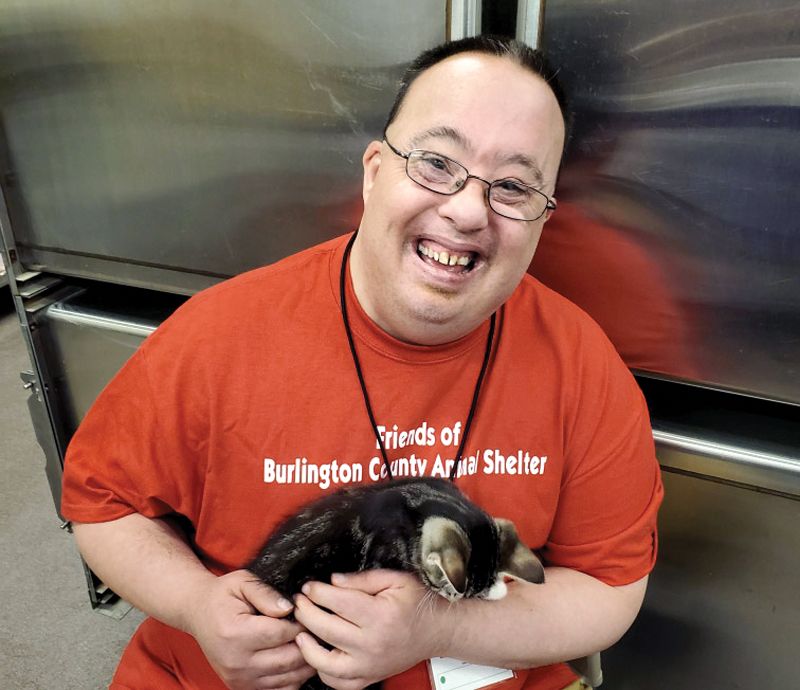
Last year, the shelter began working with Friends of Cyrus, a day center for adults with disabilities in Medford, New Jersey, by sending a volunteer there to teach people how to make dog and cat toys out of old T-shirts. Before long, a few individuals began coming to the shelter, and a Friends of Cyrus support professional became a shelter volunteer, mentoring her charges when they were there. A young man with Down syndrome volunteers each week in the community cat room, where he pets felines and uses toys to play with them. “He loves the cats, especially orange tabbies,” Rapisarda says. This year, the shelter plans to begin partnering with another disability center nearby.
35% of working-age people with disabilities are employed.
Since 2015, the Arizona Animal Welfare League in Phoenix has partnered with the Southwest Autism Research & Resource Center and its First Place Transition Academy in a program designed to help adults with autism spectrum disorder transition to independent living. AAWL provides one-on-one training to onboard the students, and a SARRC staff member joins them at the shelter to help address any issues and to provide additional guidance.
Students come once a week to do an hour of work that animal care technicians typically would do, such as cleaning bowls, carriers and laundry. After that, they have an hour of free time to be hands-on with a select group of dogs or cats, particularly those who are shy or fearful but are willing to cuddle up for mutual enjoyment.
Because some people on the autism spectrum dislike bright lights and loud noises, they often prefer the quiet cattery.
“The adults often leave us after a year or so for ‘real jobs,’ and we are always so sad to see them go because they are fabulous additions to the team,” says Whitney Steele, AAWL director of volunteers and events, who hatched the idea for the program. She’s written many job recommendation letters, and the shelter has even hired a few former students as animal care technicians.
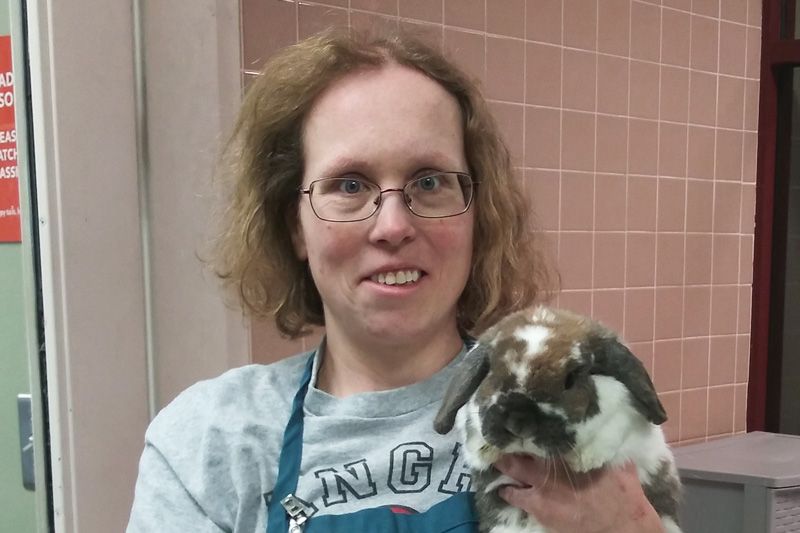
Structured approach
It’s important to write an inclusion and diversity policy for your volunteer manual, and know that it’s OK to say no if an individual is not a good fit or things don’t work out, Waldvogel notes. Problems can occur when an organization tries to insert someone into its regular volunteer program even if the person “is nowhere near what’s needed for the animals,” says Hager—resulting in a struggle to help keep people safe, focused and contributing in positive ways.
Hager recommends having an “essential capabilities” document that outlines the mental, physical and emotional requirements for volunteer roles and also provides a means for someone to express what kinds of accommodation they might require to carry out the work safely.
Volunteer programs that lack processes, structure, guidelines and standard operating procedures are probably not well-positioned to accept people who’ll require additional assistance or accommodation right away, and should be careful about saying yes when they can’t support people’s needs, she adds. Because the primary goal of a volunteer program is to support staff in meeting the organization’s mission, all volunteer roles and activities should be geared toward that goal.
“If people aren’t able to assist in a meaningful way and the basic needs of the animals aren’t being met, it’s not always possible to figure out a way to accommodate someone who might need additional assistance,” Hager says.
Waldvogel says she often hears from job coaches or supervisors from programs for adults with cognitive or physical disabilities. When asked what volunteer roles such individuals might play, Waldvogel stresses that safety is critical and that volunteers won’t necessarily work directly with animals. But even if potential volunteers don’t meet the shelter’s extensive checklist of essential capabilities, they often can help with laundry, cleaning food dishes or other tasks.
Six years ago, for example, a young woman who uses a wheelchair inquired about volunteering. While the shelter’s entrance is wheelchair accessible, Waldvogel explained that there would be limitations inside the building. “I said we can try to make this work and see how it goes,” Waldvogel recalls. The woman, who had cerebral palsy, understood and ended up volunteering in the cat colony room for more than a year. “Patrons loved to come in and see cats sitting in her lap,” Waldvogel says.
A teen with Tourette syndrome, who makes occasional high-pitched tics or sounds that often can’t be controlled, initially wanted to walk dogs, but Waldvogel was concerned the condition might startle some dogs and cause the young man to be injured. He ended up helping with enrichment, where he excelled, and now preps foster care supplies and does weight checks on puppies and kittens waiting for foster care, “which he loves,” Waldvogel notes.
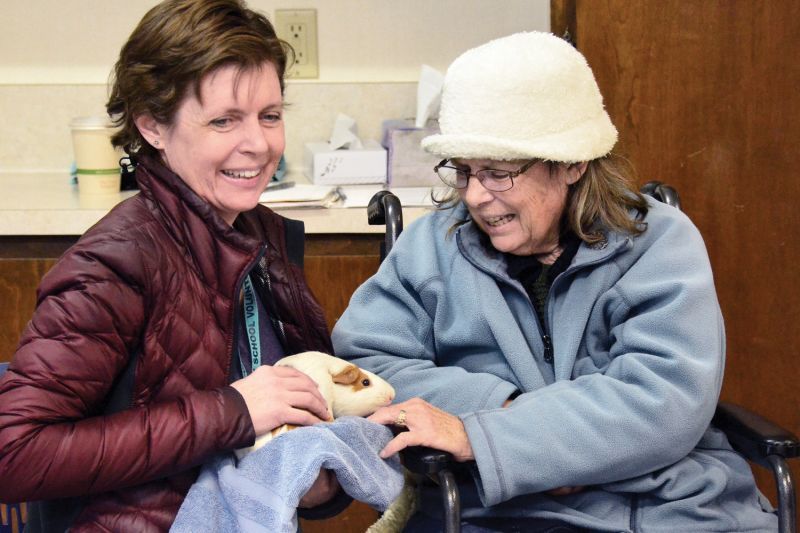
Safety first
About half of prospective volunteers with disabilities that aren’t immediately apparent self-identify when they apply, Waldvogel says, which helps staff look for roles that might be a good fit. Other times, issues may reveal themselves after a volunteer has been on board for some time. That isn’t uncommon with any volunteer, and part of volunteer management is monitoring how people are doing and finding them new roles or letting them go if necessary.
In 2015, the shelter severed ties with an organization that brought volunteers with cognitive or intellectual disabilities to help wash laundry and dishes. The initial agreement called for one supervisor for every two volunteers, but before long, there were more than a dozen volunteers and only three supervisors. Things came to a head one day when some volunteers ran up to scared dogs in the hallway, putting their faces close to the animals’ faces: “The clients were too at risk for being injured due to lack of supervision.”
Waldvogel assures managers that when such issues arise, it’s OK to let go of a volunteer with a disability, just like they would any other volunteer or employee.
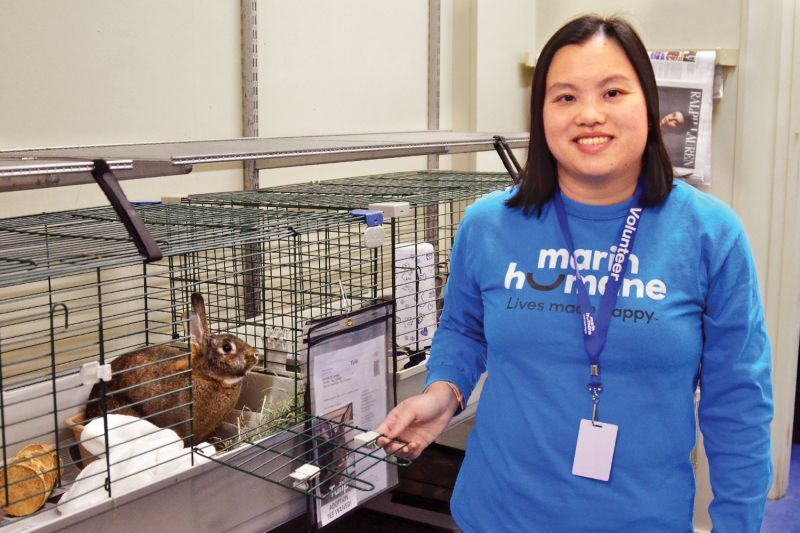
Inclusive joy
If your shelter isn’t yet prepared to open its volunteer program to people with disabilities, you can consider involving them in other ways. In 2016, Marin Humane in Novato, California, launched Compassion Corner, an hour-long, twice-monthly opportunity for people with physical and developmental disabilities to interact with animals in a safe and controlled setting.
The shelter calls those who come “guests” instead of “volunteers” and typically has three animal-assisted therapy teams visit with attendees. One staff member might bring in a couple of guinea pigs or rabbits, and Anne Oliver, Marin Humane’s director of volunteer services, likes to bring a “super mellow cat or kittens for people to enjoy.”
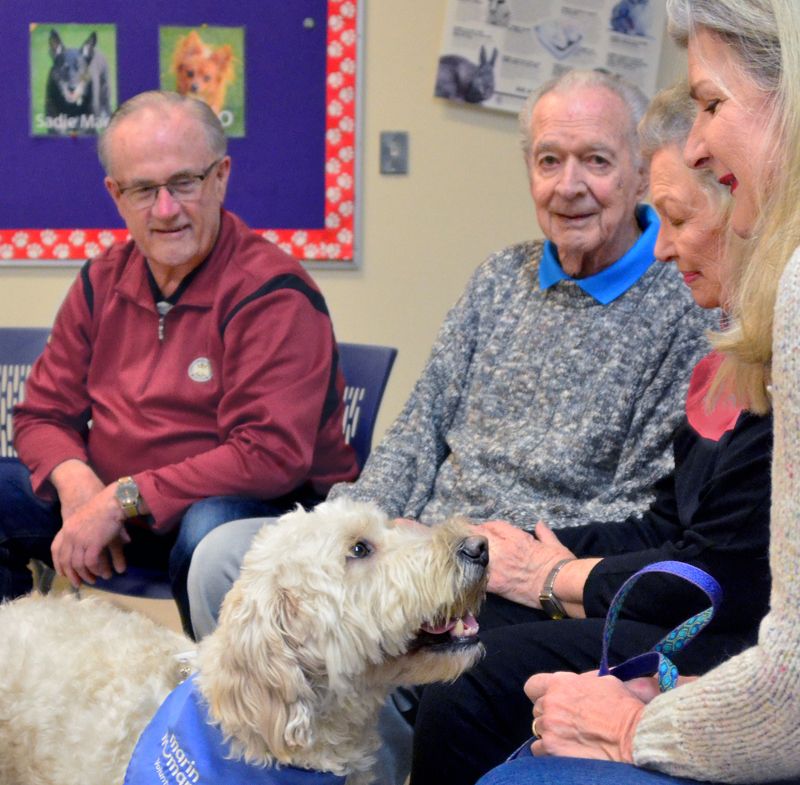
Oliver says the program evolved because she “hated having to turn people away from volunteering because of a physical or mental/ emotional challenge” that disqualified them from a regular volunteer position. This way, Oliver says she almost never has to turn down anyone and knows that many will benefit “from the love and affection of being close to an animal.” About 10 to 16 guests come to each session.
Guinea pigs enjoy being fed fresh greens before settling into the coziness of a towel where they are cuddled in the arms of a guest. Cats and kittens can be a little rambunctious for the group, but Oliver says “when we get one that enjoys all of the people and activity in the room, we know the kitty will adapt well to any new home environment.”
“Some people want to be super close to the animals; others only want to watch,” Oliver adds. “Their delight and gratitude is so noticeable.” Many dogs also like taking part: “Not only do they get loads of hugs and pets, they get to show off their tricks, too.”
Oliver says creating a more inclusive environment is one of the most rewarding parts of her job. “It is so worth the extra time and little bit of effort to know that we have helped bring love and joy to people who deserve to feel the unconditional love of an animal.”



